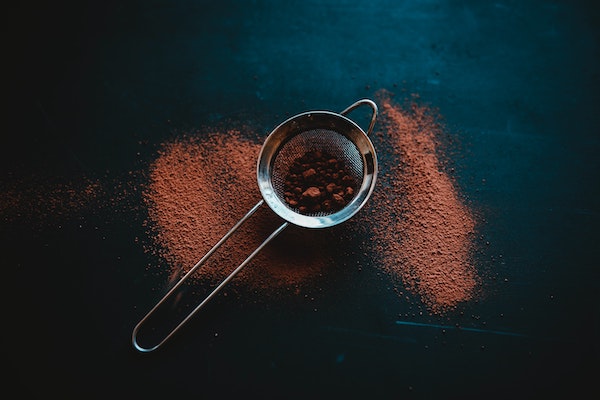
HOW to identify a REAL DARK CHOCOLATE 🍫by REALLY looking and reading the package
After people reach their early 30's, they become more conscious of their health. So if you are a long-time chocolate enthusiast, chances are you're now opting for higher quality chocolate bars. Still, it might be complicated to identify the genuine and high-quality chocolates you desire. In this article, I examine the key details you need to know to identify the real and beneficial chocolates.
Many mainstream chocolate brands (the ones you can easily buy at grocery stores for less than a few bucks) lately adopted elements like "single-origin," "70% percent cacao," or even "sugar-free" to make their products more attractive while using the same cheap and unhealthy ingredients. While true, these labels could be deceiving for the customer.
I will explain the difference between ingredients used for ethical, sustainable, socially responsible craft chocolate-making, and mainstream chocolate. In this manner, you will make informed decisions when buying dark chocolate. Like many of you, I've loved dark chocolate since I was a clueless little kid. Whether my favorite mainstream chocolate bars were healthy or not or which ingredients were used to make it, I don't know. I just loved its distinctive non-changing sweet, fudgy flavor.
Now things have changed for me. Make sure you read until the end since I will describe my experience learning how to find the dark chocolate bar that benefits your health, your experience, and the planet among all the possible options available.
CACAO BEANS
First things first: There can't be chocolate without cacao, right? Less than 5% (some report even less) of the world's cacao is high-quality and fine-flavor. Due to its quality and scarcity, it's costly. While the term "single origin" is trendy among all kinds of chocolate makers, it could still be coming from African countries where child slavery and poverty are common practice. More than 70% of cacao in the world come from west Africa, where the latter still happens. This area of our planet is in the hands of large chocolate makers and depends on market commodity prices. The emphasis is in volume (not quality), that is how they can make a living. If they were to change and produce better cacao, they would get paid the same, so there is no incentive to provide high-quality beans.
You will also see "fair trade," "certified organic," "rainforest alliance," and other seals, and this is a step in the right direction. However, these seals are mostly obtained by companies that have significant financial resources to get it. Furthermore, some reports show that the farmer, including cacao farmers and workers, get very little at the end. (LINK to NYT article)
After this long cacao story, then how can we recognize real dark chocolate?
- Seek more than "single-origin" in the packaging. Instead, look for the farm name, the farm owner, search for real stories from the producers.
- Look for transparency details more than certifications and seals of approval. If craft chocolate makers have ethical practices like direct trade, they will probably be happy to tell you. You might find this written in the package, they might add a QR code (example from Uncommon Cacao HERE) or link for you to read the information. This information is usually published on their website.
- SPECIAL NOTE: As of today, the final price of a chocolate bar can be a good indicator of the real quality of chocolate using fine-flavor cacao. Costly bars usually means that premium prices were paid to obtain better fine-quality cacao DIRECTLY from the farmer, and much better overall chocolate experience.
SUGAR
This is the second essential ingredient for making chocolate. Usually, you can tell the amount of sugar by subtracting the cacao percentage. For example, a 70% cacao chocolate bar means the rest, 30%, is sugar. (details HERE) This is assuming there are no other ingredients added. There is no need to demonize sugar; in fact, some sweetener is needed to enhance the natural flavor notes on cacao beans. A small amount of sugar does not cause any harm, the problem comes when consuming excessive quantities.
It takes me three to four days to eat a standard 70% bean-to-bar chocolate bar, which has approximately 60 grams (2.1 oz). This means that I will be getting six grams of sugar per day from the chocolate. Health experts like me usually recommend patients to avoid consuming more than 25 grams of added sugars per day. Some bars will have even less sugar if they have other ingredients added, like vanilla beans, or milk powder in a bar of dark-milk chocolate.
There have been efforts to use alternative sweeteners like coconut sugar, honey, maple, and agave. From the health point of view, all of these count as sugar. From the flavor point of view, you will probably experience a different character in those chocolates.
Also, there is a need to consider sugar substitutes. Many consumers are looking to avoid eating sugar. This area is very controversial. Indeed, most sugar replacements are not absorbed by our bodies. As a consequence, no blood sugar elevation and no calories from sugar consumed. However, multiple research articles are describing many undesired effects of sugar alternatives, including:
- Making your brain believe that you are eating sweets and triggering all the same pathways linked with weight gain.
- Our microbiome, living bacteria in our guts, seem to be adversely affected by these sweet alternatives in a way that is detrimental to our health.
I suggest you stay with sugar as the second main ingredient and as the sweetener. Additionally, enjoy a small piece or two of chocolate per day, so you stay within the amount of sugar easily handled by your body. Finally, to help with the latter, try to select high- % cacao bars like those in this collection.
FAT
Cacao butter is the natural fat that comes from the cacao beans. All chocolates have cacao butter from the beans used. However, some chocolate makers add additional or extra cacao butter to improve the texture. This could happen if the cacao bean itself has a lower fat %. The resulting chocolate could have a unique and fantastic flavor. Still, the texture might not be as pleasant as the artisan would like. Then, the chocolate maker might add extra cacao butter.
SPECIAL NOTE: In an ideal situation, the additional cacao butter could be single-origin, coming from the same cacao bean used to make the whole chocolate. However, it is one of the most expensive ingredients and a reason other texture-improving elements are added, like organic cacao butter, and soy or sunflower lecithin. They are more affordable and do not change the flavor.
In summary, for this section, try to look for just two-ingredient chocolate bars, i.e., cacao and sugar. At the same time, cacao butter as a third ingredient is well accepted, and organic lecithins are OK. Avoid anything else.
MILK
If you prefer a bar of creamier and lighter chocolate, craft chocolate makers have something for you. Also, in the ingredients list, this is easily identified as milk powder or dried whole milk. Make sure they are organic.
Chocolate makers are becoming creative, and a dairy alternative is also available for you. The most common non-dairy "creamy" ingredient for those looking for a dark-milk chocolate experience is coconut milk. Now, coconut milk does add a flavor note that you have to be aware of. It does very well with certain cacaos that carry fruity flavor notes. Finally, oat milk has been used successfully in real craft chocolate making, and it seems very neutral when it comes to flavor.
TIP: Avoid any other additions when it comes to milk, which could be identified by one ingredient followed by others in parenthesis or many "kinds of milk" as an ingredient. For instance, "Milk (lactose, whole milk powder, anhydrous milk fat, skim milk powder)."
OTHER ADDITIONS / FLAVOURINGS
You might already know this, but cacao beans hold specific flavor notes in each batch that are uncovered throughout the making of chocolate. As there can be similarities, no cacao bean tastes the same. Even different harvests of the same beans can have a different final flavor due to changing weather conditions and handling. Sometimes, chocolate makers find useful to include some inclusions like cacao nibs, sea salt, nuts, or vanilla to enhance the natural flavors from the beans. Again, what matters the most is the quality of the ingredients and their traceability. Look for organic whenever possible, and avoid "natural and artificial flavors."
RED FLAG: When you see "chocolate" as an ingredient, it means this particular maker did not make the chocolate but bought it from someone else. With a few exceptions, these are commonly lower quality products, and you will have less control in knowing where it came from.
Next time you're out looking for your dark chocolate bars, remember these key steps:
- The list of ingredients is organized from high to low quantity, and it is the key to choose dark chocolate good for your health. Try to look for less than 5 ingredients, ideally two or three.
- The red flag? If there are ingredients you don't recognize as natural or can't pronounce, look for another chocolate.
- Look for a bar that clearly states the % of cacao, and choose those with a higher percentage. Sixty-five percent (65%) or higher is highly advisable. The higher percentage that provides you with a delightful experience that you feel you want to repeat, the better. Start with THESE.
- Search beyond single-origin, and find more in-depth details like the farm (name, city or town), and the cacao farmers or workers. Watch for accurate information about how buying such a bar of chocolate is benefiting everyone.
TIP: Most of these chocolate bars you will find in stores like ours and in gourmet food locations. Not in grocery stores.
If you want to know more about dark chocolate benefits to our health and the planet, based on scientific proof and medical studies, check out previous blog posts.
Thank you!
Ramón







1 comment
Hello clubchokolate.com administrator, Thanks for the informative post!